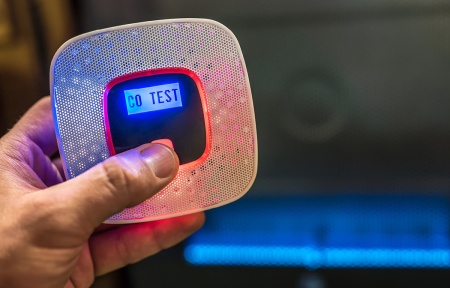How a Biden administration will change the regulatory landscape for GAWDA members and how they might handle a COVID vaccine
By Tom Badstubner, Marilyn Dempsey, Michael Dodd, Rick Schweitzer, and Steve Guglielmo
The First Quarter of 2021 will be marked by two milestone events. The first is a transition of powers within the federal government. And the second is the rollout of a COVID-19 vaccine. GAWDA’s Consultants spoke with Welding & Gases Today about how these two events might impact our industry and the changes that they expect to see as a result of them.
Thank you to Tom Bastubner, GAWDA’s FDA and Medical Gases Consultant, Marilyn Dempsey, DHS, EPS and OSHA Consultant, Michael Dodd, DOT Consultant, and Rick Schweitzer, Government Affairs and Human Resources Consultant, for lending their time and expertise to discuss these important topics. The following is a lightly edited transcript of that conversation.
Welding & Gases Today: How do you see the regulatory environment in a Biden administration differing from the environment of the Trump administration? And what will that mean for GAWDA members?
Rick Schweitzer: In general, I think there is going to be more of a labor orientation to the new administration. And, for transportation, that means a great focus less on highways and more on transit. More on labor, less on cooperation with management. There will be, probably, a more adversarial relationship between government and business and less of a cooperative relationship. If you go back to the Obama administration, particularly on things like HAZMAT transportation and EPA regulations, there was quite a contentious, adversarial relationship between business and government.
I think, specifically, when you’re looking at regulations, first of all, from a global standpoint, I think there will be less of an effort to preempt state and local regulations, particularly those that are seen as safety regulations. On the transportation side, I think, for things like state and local meal and rest break requirements for truck drivers or for hours of service of regulations, there will be little stomach at DOT or elsewhere to preempt state or local requirements. And, I think, things like the definition of “employees” as opposed to “independent contractors” is likely to change significantly. In California, in the last several years, there has been a fight to impose a new standard, sometimes referred to as the “ABC Standard” for who is an employee and who is an independent contractor. The House of Representatives, in June of 2020 actually passed a law that would have adopted the California rule as Federal law. It never got through the Senate. However, if the Senate does manage to switch to Democrat control, (EDITOR’S NOTE: This interview was conducted before the January 5 Georgia Runoff Elections) I think it is highly likely that that bill comes up again. This would have tremendous repercussions for labor law in this country.
WGT: Rick, are these changes that you’re referring to things that can be done unilaterally by a Biden administration? Is it a question of how the agency chooses to enforce its rules or would they have to be changed through legislation?
Rick: In terms of more enforcement and less cooperation, that doesn’t require regulations or legislation. That would just be a change in attitude and focus and priorities at regulatory agencies. Similarly, to the labor orientation, that just means that the policies and priorities of agencies are going to differ. That’s something that any administration can do, based on their particular orientation and their constituencies. The specific legal or regulatory requirements, like the definition of an employee, would require a change in the law.
Marilyn Dempsey: I agree with Rick. We’re really going to have to wait and see. I think that is going to be an interesting transition. I believe the EPA regulations will be significantly tightened and enforcement will also be increased.
Tom Badstubner: For many years we’ve been working on having appropriate regulations for medical gases. The existing regulations are appropriate for most situations. But there are some explicit examples where the regulations are not appropriate for medical gases. For example, on expiration dates and calculation of yield. The FDA has been working on appropriate regulations for medical gases for about two years and has postponed the release of those proposed new regulations a few times. The last postponement happened in July, and it postponed to August 2021. If the Biden administration has different priorities, it’s possible it could be postponed even further. The Compressed Gas Association, under Rich Gottwald’s leadership, has taken a proactive position and is discussing options to encourage the agency to honor their commitments to release proposed medical gas regulations in August 2021.
Rick: There are several items with regards to DOT where I think there might specific changes in the regulations that I think are important for members to understand. The first would be liability insurance minimums. The Obama administration had an advanced notice of proposed rulemaking to look at liability insurance minimums for motor carriers including HAZMAT carriers, and they were relying on a GAO study that indicated that these minimums, which are now $1 million or $5 million, depending on what type of HAZMAT you transport, haven’t been changed since 1984. So, a significant increase just looking at inflation would be in order. It would probably be in the neighborhood of double or even triple what is required right now. How that would affect premiums and the availability of coverage in the marketplace is completely unknown at this point. But I expect that is something that will come up.
I think the hours-of-service short haul exemption, which exempts drivers from driver logs and ELDs and the 30-minute break requirement will get additional scrutiny. That has just recently been expanded to 14 hours and 150 air miles. It wouldn’t surprise me if that were restricted back to something less broad.
There might well be a rulemaking on sleep apnea requiring companies to impose additional restrictions on drivers who have been diagnosed or even targeting of drivers for sleep apnea. Right now, basically, medical examiners have a great deal of discretion in that area, but they are operating on guidance, not regulations.
I could see the administration looking at the regulation of off-duty hours for drivers. You go back to a horrific accident that involved a Walmart driver that was driving several hours just to get to his work reporting location before he got into the truck and logged on duty, and had a fatigue related accident in which there were several fatalities. I think that, and some similar incidents could be used as a justification for a regulation that could impose limits on how far a driver could commute to work or how long a driver could commute to work before beginning a shift. Similarly, I could see restrictions on driver compensation. Right now, the trucking industry specifically, maybe not for GAWDA members, but for many carriers, the payments are by the mile or by delivery, which is, some think, an excuse or an encouragement to speed or to fudge hours. I could see the agency, for the first time ever, looking at compensation regulations. The DOT has never done that before, but they might well do that.
I could also see the agency reconstituting their proposed rule on speed limiters on commercial motor vehicles. The Obama administration was pursuing that approach, the Trump administration, essentially, set it aside. I could see that being put back on the front burner.
Marijuana legality is something that I think is going to be taken up by Congress. And I’m not sure how that might affect drug and alcohol testing. Even if marijuana is legalized for personal use on a nation-wide basis as it has been in a number of states now, there is still no impairment test for marijuana like there is for alcohol. So, it would be very difficult to treat marijuana testing the same way we treat alcohol testing. But I could see there being some effort underway by Labor or Driver organizations to at least get medical marijuana exempted from DOT testing.
And then there are lots of equipment regulations that might be considered by DOT. Things like underride guards for the sides of the vehicle or the strengthening of rear underride guard requirements. And additional safety technology standards that, right now, are optional but may well be imposed by the National Highway Traffic Safety Administration. Things like lane departure warning requirements, collision avoidance systems, collision notification systems, cameras on the outside of vehicles as opposed to mirrors. And lots of other safety technology devices that have been optional.
Mike Dodd: I want to chime in on two of the items that Rick mentioned. With regard to the hours of service, right now we’ve had the benefit of it going to 14 hours, which is not that big of a deal for employees vs. the 12 hours. But the 150-mile radius has been such a benefit for our membership that I would really hate to see that go back again. That has made a very big difference for a vast majority of our small distributors and our large distributors. As far as staying out of the logging rules if they stay inside the 150 miles. That would not be a deal breaker. If it goes back to the old rules, okay, we lived with that for all those years. It wouldn’t be the end of the world.
The sleep apnea program, though, that would be a whole new ballgame. We’ve had people try to impose that over the last few years. That will be a lot of cost, expense, and time involved for the Motor Carriers and the drivers if they put that program into place. That one is a concern.
Marilyn: Like Rick said, the doctor has the discretion right now. Last time I went for my Med Cert, the Dr. measured my neck and if it was over a certain measurement, they would have sent me for a sleep apnea test.
WGT: Could you explain what that would mean, functionally? My wife says I snore, I may have sleep apnea. Who knows? If I were to become a trucker, what would that mean for me if I was diagnosed with sleep apnea? What would change?
Rick: Well, right now there are a number of technical markers that direct a medical examiner toward screening. One is neck size, as Marilyn mentioned. If your neck is over 17 inches, that is a marker that you might be obese, and obesity is also an indication of potential sleep apnea or some other kind of sleep disorder. And then, there are a series of questions that they ask you. Do you snore? Do you have a history of daytime drowsiness? Do you take naps in the afternoon? If the answer to any of those questions, or several of them, is yes, then you’re sent for a sleep test or some other kind of diagnostic analysis. Some tests are home tests, some you have to go to a sleep lab. But if the diagnosis comes back that you’re within a certain range for waking up, then you have a sleep disorder, whether it’s sleep apnea or something else. And at that point, the medical examiner has discretion to order you to take certain measures as treatments. And they can qualify your medical certificate based on you complying with those requirements.
Again, a regulation might take that discretion out of the hands of the medical examiner and make it specific in the requirements in 391.41. Right now, it just says if you have any breathing or a disorder that interferes with your ability to operate a commercial motor vehicle safely, then you aren’t qualified. They could be a lot more specific than that and sort of incorporate all of these steps that I’ve just outlined.
WGT: Let’s move from one topic that everybody is sick of talking about in politics, to another one. Once we move past COVID, what would you say is going to be the biggest takeaway for GAWDA members from this whole experience? Are there going to be best practices, things that we learned that are going to carry through and become an everyday part of our lives? How is our safety culture going to change?
Marilyn: Oh, buzzword for me. Safety culture. I believe the overall Safety Culture of GAWDA members has improved since the onset of COVID-19. Members are very engaged with their employees, their health, the health of their families and this engagement results in a greater confidence of management by employees.
One of the biggest takeaways from COVID is how we view the impact of a sick employee. Pre-COVID illnesses were an annoyance for a few days. Now, it can be over 14 days, that is a much larger impact on day-to-day operation, and I believe this will change how employers approach health evaluations, employee wellness programs and cross-training employees.
Rick: The whole idea of contact tracing. When you have an employee who has either tested positive or has been exposed to someone who has tested positive, how far do you go in contact tracing? Does it affect everybody that person has come in contact with for a certain number of days? Who implements that? Who requires it? Who enforces it? A lot of this is going to end up in the courts, unfortunately. A lot of it already has. I think we’re going to have this miasma of tort requirements and quasi-regulatory requirements for the foreseeable future.
Marilyn: And we’ll have to see whether more states other than Illinois and New York will lean more towards the company must prove COVID was not contracted at work. Right now, most states follow OSHA’s reporting criteria where a case of COVID is NOT work related unless all of the following are true:
- The case is a confirmed case of COVID-19 (see CDC information on persons under investigation and presumptive positive and laboratory-confirmed cases of COVID-19).
- The case is work-related (as defined by 29 CFR 1904.5); and
- The case involves one or more of the general recording criteria set forth in 29 CFR 1904.7 (e.g., medical treatment beyond first aid, days away from work).
Rick: That’s a fundamental change in workers comp law. The assumption that if you have COVID, that you got it at work. In no other area, is that presumption in effect.
Tom: I see a couple of other changes, post COVID. Everybody, especially employers, are taking a look at our responsibilities to ensure health in a different way. Marilyn mentioned tracking employees and advising them of what to do if they’re ill or once they’ve been exposed to somebody who is ill. That is something we wouldn’t have done before. But after COVID, we might be more concerned to employees’ health exposure away from work… because it may affect our operations.
The other thing that we’re taking more seriously is the environment our cylinders are being exposed to as well as how they are cleaned by our customers. We have always had the responsibility to ensure our cylinders are not contaminated, but we’re recognizing it more this past year.
Marilyn: And general housekeeping.
Tom: Exactly, housekeeping as well. I think those are actually some potentially positive things that will come out of this experience that we’ve been through. Understanding and implementing our own responsibilities more affirmatively.
This industry, I think, does a marvelous job of managing risk. We’re shipping millions of high-pressure cylinders with unbelievable amounts of energy stored inside of them. And they’re all hazardous materials. And they have to be treated very carefully. And we do that to all kinds of industries. From welding to foods to biotech to oil extraction. And we do that really well. I think we’re probably looking at that risk management process even more carefully than we did before.
WGT: Now, with the advent of multiple very effective vaccines, is there going to be a situation, or can there be a situation, where companies are going to start mandating that employees have to be vaccinated in order to come to work? Does that put us in a perilous legal situation? Where do you see that headed?
Rick: Yes, I could see companies mandating that employees have a vaccine in order to be eligible to return to work. And that does put them in sort of a precarious legal position. My expectation is that the federal government, either administratively through the CDC, or possibly even through Congressional action, could impose guidelines and some liability protections for businesses so that it becomes a government regulation, rather than a business requirement. I think that is certainly the preferable way to go. There are still some people who are opposed to vaccines generally, others who might be opposed to a COVID vaccine, thinking that it was rushed through the process. And how the government treats those people, and, barring government action, how employers deal with those people, is going to be interesting. But yeah, I think that’s a legitimate concern. Right now, the CDC has said things like, it’s okay for employers to do temperature checks every morning and to ask questions about whether or not you have felt sick in the past 24 hours and other relatively innocuous and non-invasive inquiries. Obviously, requiring a vaccine is a different magnitude and does impose some medical risks on people. The best vaccines do. So, my guess is that the government will step in at some point and allow businesses to make these requirements without liability. But, again, this is a different administration. If it were still the Trump administration, I would say absolutely that will happen. But under a Biden administration that is going to have more of a labor orientation, it’s less of a certainty.
WGT: On the subject of vaccines, there has been a lot of talk about how we get it to places. How do you think that this vaccine, as it becomes more widely available, is going to positively impact our members and our industry?
Tom: The Pfizer vaccine requires dry ice for refrigeration. And the dry ice producers are aware of that and are considering how they can supply the dry ice for the vaccine. Fortunately, we have widely distributed carbon dioxide and dry ice plants around the country, so I think this is something that our industry will be able to handle.
WGT: Is there anything we didn’t touch on that you want to leave members with as a last thought?
Marilyn: We talked previously about getting back on track with safety and compliance. Most companies have experienced COVID disruptions and they at least have a response. The first quarter of 2021 is a good time to review that response: find out what went well and where your gaps are, both in policies and in training.
The other consideration is the dramatic increase of insurance rates. One of the easiest ways to decrease your premiums and MOD rates is to have less accidents and injuries. I think this is a good time for companies to review and improve their policies, procedures and training programs – these are key components of a good Safety Culture and a direct route to decreasing incident costs.
WGT: That’s a good point. We’ve been so preoccupied dealing with COVID, that we’ve let our normal compliance and training slide by the wayside. As we start to get back to normal in the near future, anything on that topic that we should add?
Mike: I am concerned that training has taken a backseat, and that eventually will catch up. And one of the ways that it is going to catch up is that inspections are starting to pick back up again. Not only are they doing new, remote inspections. But I’ve had many people now that have had in-person inspections. Most of them have been from the Pipeline and Hazardous Materials Safety Administration looking at cylinder requalification and cylinder filling issues, but, while they’re there, they’re mandated to look at the training. And they’re looking at shipping papers, etc. So, I’ve had a lot of calls in the last couple of weeks about in-person visits and roadside inspections have picked way up again. So, I think things are getting back to normal from a regsulatory standpoint and an inspection standpoint. And I’m not sure our members are prepared for it.
Tom: From an FDA perspective, we haven’t seen an increase in inspections yet. We have seen some inspections from the states. But not so many from the federal FDA. As they begin to travel more, I’m sure we will start to see more inspections. However, I believe that the premise underlying the questions is inaccurate (compliance and training issues). I think we have done different kinds of training this year. And, certainly, we had to train our people on new and different procedures. For example, I reviewed the free FDA Current Good Manufacturing Practice training that we sponsor for GAWDA members. In 2019, there were 1,846 training sessions. In 2020, 1,953 people were trained with this tool… a 5.8% increase over 2019! I believe that GAWDA members are still committed to training their employees as much as they were before the pandemic. However, I think the training is evolving, and GAWDA members recognize that their success depends on well-qualified employees.







